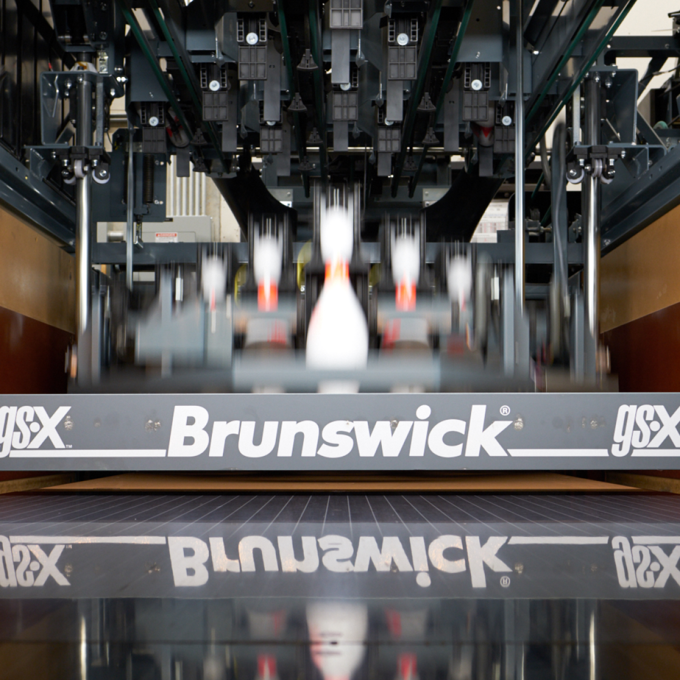
- #Brunswick gsx pinsetter sweep manual#
- #Brunswick gsx pinsetter sweep full#
- #Brunswick gsx pinsetter sweep series#
#Brunswick gsx pinsetter sweep series#
Pin turret (Brunswick A series only) - a form of pin storage used by Brunswick's Model A-series ten-pin pinspotters (A/A2/JetBack) and emulated in part by some other manufacturers.Above-lane ball returns remain in use today as a low-cost alternative for miniature arcade bowling lanes, which use scaled-down balls and pins.
#Brunswick gsx pinsetter sweep manual#
The track is normally below the lane, although earlier pinsetters (both mechanical and automatic) have above-lane tracks similar to those of older manual lanes. The ball lift is designed to separate the ball from the fallen pins in the pit, and does not send pins into the ball return track.
#Brunswick gsx pinsetter sweep full#

Pin elevator – brings pins upwards out of the lane's pit to the top of the unit for re-setting for subsequent frames to deliver pins upwards from the pit into the pin storage system.Pit – a collection area behind the lane where balls and struck pins collect for sorting.Deck (Brunswick A series only) – a fixed sheet-metal enclosure, usually fastened to the spotting table's framework and diagonal forward frame edges, that provides secondary protection (in addition to the sweep bar) for the spotting table system from improperly thrown balls and flying pins, and covers the pin chutes used to transfer the pins from the characteristic, cage-like Brunswick-design rotating pin storage turret above the table downwards into the deck for transfer onto the pin deck.Table (also used in pre-automated manual units, often as their sole mechanical device) – places the pins onto the lane for the next frame, then lifts the remaining pins for the sweep bar to remove fallen pins for the bowler's next roll.In most pinsetters, the sweep bar is triggered as soon as the ball enters the pit, usually via an optical sensor that detects the ball motion. It may also stay lowered throughout the pinsetter operating cycle, to act as the primary physical protective barrier against improperly thrown balls. Sweep bar – removes fallen and leftover pins from the pin deck.

Part descriptions common to nearly all pinspotting units include: For example, bowling-game variants may use different sizes, shapes, and weights of pins and balls, and require equipment specifically made to handle them. The designs of automatic pinsetters vary, depending on each company's hardware implementations, and on a particular bowling sport's playing rules and specifications. While many pinsetters have a manual reset button in case the pinsetter does not automatically activate at the correct time, other types have no automatic tracking of the state of the game – especially in candlepin and duckpin bowling sports, which use smaller balls – and are manually activated. While humans usually no longer set the pins, a pinchaser, or in slang "pin monkey", is often stationed near the equipment to ensure it is clean and working properly, and to clear minor jams.īeginning in the 1970s, modern pinsetters were integrated with electronic scoring systems of varying sophistication. Pinsetting machines have largely done away with pinsetting as a manual profession, although a small number of bowling alleys still use human pinsetters. The first mechanical pinsetter was invented by Gottfried (Fred) Schmidt, who sold the patent in 1941 to AMF. Prior to the machine's invention, pinsetters were originally boys or young men ( pin boys) stationed at bowling alleys to manually reset pins and return the ball.

In bowling, a pinsetter or pinspotter is an automated mechanical device that sets bowling pins back in their original positions, returns bowling balls to the front of the alley, and clears fallen pins on the pin deck.


 0 kommentar(er)
0 kommentar(er)
